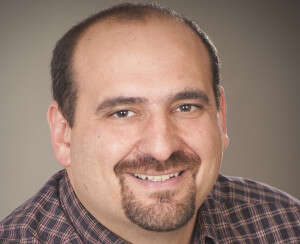CX Exchange 2023: TSA’s Niki French, Kriste Jordan Smith on the employee-customer connection
The Transportation Security Administration’s employee training aims to achieve a blend of security and customer service expertise. Jason Miller talks with the...
For the Transportation Security Administration, customer experience and security aren’t dueling concepts.
The belief that security must come first, even at the expense of other priorities, doesn’t sit well with TSA leaders.
“There’s nothing customer service that conflicts with security. It’s really about how we phrase it and how we talk about it in the security context,” said Niki French, the customer service branch manager for the Transportation Security Administration in the Homeland Security Department.
“Professionalism is one of our core values at TSA,” French added during the Federal News Network 2023 CX Exchange. “That, to me, embodies everything including customer service. If you’re not being professional, then what are you doing? It’s in the fabric of everything we do. We’re highlighting it. We’re drawing attention to it.”
TSA trains its transportation security officers (TSOs) from day one, starting with standard operating protocols that embed the agency’s core values of integrity, respect and commitment, French said. She explained that the agency modeled the training, called CX Demystified, after the MythBusters campaign.
The course goes over things like what customer services means in action and mindset at TSA. An emphasis is placed on being professional and communicating clearly, not on some misplaced notion that the passengers are always right, she said.
Those are critical in creating buy-in with the public, French added, because there is a symbiotic relationship that has to exist.
“We don’t want to come at people and [have them] think that the customer service that’s provided at the checkpoints is terrible. What we’re really after is a culture shift and getting people to understand, especially the frontline workforce: Why does your behavior matter? It matters a lot,” she said. “No. 1: security. We rely on passengers as a layer of security. If the passengers don’t trust us to do our job, they’re not going to help us in reporting unattended bags or suspicious behavior. It’s really, really critical.”
Data drives training for TSA
And this training isn’t just a one-and-done effort. The agency reinforces at more than 400 airports across the country.
Kriste Jordan Smith, TSA’s federal security director at the Dallas-Fort Worth International Airport, said her team spends a lot of time with the TSOs, looking at the data collected about her airport and other airports, and addressing both good and bad situations as they arise.
“If you have employees who are engaged, who are respected, who really enjoy what they do every day and know that we’re going to have their back when the difficult situations arise, then that engaged employee is going to perform better,” Jordan Smith said. “Customer experience and passenger experience are just another type of performance. You have to have a culture where those employees are valued and appreciated. A huge part of the emphasis of everything that we do here is that employee culture piece that drives all the rest of this.”
With more than 1,000 TSOs at the Dallas-Ft. Worth airport, ensuring those conversations resonate with a large group of people can be difficult. Jordan Smith said that’s why TSA is as quick to celebrate successes as it is to correct problems.
“Our customer service quality improvement managers or passenger experience managers, as I call them, provide compliment data to the officer and their chain of command so they can celebrate what went well. They will have a conversation during their shift brief on that and really learn as an entire checkpoint on what went right,” she said.
“We also take that data on what did not go well, those complaints, those trends, but we take that also with a grain of salt because complaints are rare, and they’re too rare. They’re not meaningful enough. It almost always boils down to the same thing: how we said it — the rude officer allegation and the way we showed up in that moment. We go back, very specifically and hot wash it with that individual, and then the entire team as a whole. It’s all about the refinement of that conversation and how we said it that we try to home in on.”
New survey to begin at 16 airports
The best way to truly hone in on the state of customer experience across TSA — the trends, both good and bad, and what can be done to further improve service — is through data.
TSA will begin conducting its first broad-based survey since 2019 across 16 airports around the country. Four years ago, TSA surveyed five airports.
French said data collection will happen over a two-week period in early May, asking people at the time of their screening how it went. That is data TSA normally doesn’t have access to because it usually only hears from people who had a negative experience.
“We will obviously need to take some time to analyze the data and really make sure that we’re crossing all our Ts and dotting our Is. We expect to have the data in the fall,” French said. “We will be providing it individually to all the airports that participated and helped us out. Then we’ll have a national roll-up to all of TSA. It is also a reporting requirement for the Office of Management and Budget, so that data will be publicly available on performance.gov/cx.”
TSA also plans to use the survey findings to develop action plans to improve its efforts to train and communicate what customer experience means across the agency.
“We are looking forward to seeing exactly what the traveling public thinks that we should work on, because what I think I should work on and what Kriste thinks we should work on hopefully line up,” French said. “You can’t go forth with CX projects without asking your customer base what they need from you.”
Jordan Smith said because of the size of the Dallas-Ft. Worth airport — five terminals, 15 checkpoints and tens of thousands of people coming through each day — it can be difficult to ensure consistency in the experience.
The data analysis will provide her team with a renewed energy and a renewed focus for how best to stay aligned with what headquarters and other airports are doing, she said.
“We are chomping at the bit to get the survey data back. We’re very much looking forward to the voice of the traveler being in our ear and helping guide our next steps and have that more consistent positive and secure experience,” Jordan Smith said.
French added that another valuable source of data is the TSA Contact Center. The center provides airports with monthly reports that share the top five complaints nationwide, as well as the top five airports with the highest number of complaints and the top five with the lowest.
“When we get these reports, we send them out to Kriste and all the other airports. We normalize that data per 100,000 passengers. So when we talk about complaint rates, it could be four complaints per 100,000 passengers. It’s a pretty low rate, particularly when you think about 2 million-plus people traveling every day. Complaints really just don’t make up a ton of our volume,” French said.
“We align with Kriste and her team on this customer experience focus. We get their data from their customer experience team and look at the trends that their data is showing,” she continued. “They’re very transparent and open with their wait time data, which is incredibly valuable to us. We’re very fortunate that they’ve invested in an automated wait time tool so that folks can see ahead of time what to expect when coming into the checkpoints. We can also use that to calibrate our operations and hot wash so there’s a free flow of ideas, information, data, all of that. We really partner with them closely. We share the same values, and we want the same things.”
To read or watch other sessions on demand, go to our 2023 CX Exchange event page.
Copyright © 2025 Federal News Network. All rights reserved. This website is not intended for users located within the European Economic Area.
Related Stories
Featured speakers
-

Niki French
Customer Service Branch Manager, Transportation Security Administration
-

Kriste Jordan Smith
Federal Security Director, Dallas Fort Worth International Airport
-

Jason Miller
Executive Editor, Federal News Network
Upcoming Events
Related Stories
Top Stories

Niki French
Customer Service Branch Manager, Transportation Security Administration

Kriste Jordan Smith
Federal Security Director, Dallas Fort Worth International Airport

Jason Miller
Executive Editor, Federal News Network
Jason Miller has been executive editor of Federal News Network since 2008. Jason directs the news coverage on all federal issues. He has also produced several news series – among them on whistleblower retaliation at the SBA, the overall impact of President Obama’s first term, cross-agency priority goals, shared services and procurement reform.






